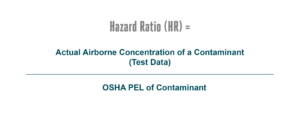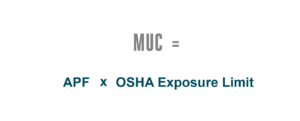By Rob Gaines, MPH, CSP, Executive Director – Client Excellence, U.S. Compliance
Across all facilities, ensuring the safety and health of workers in environments with potential airborne contaminants is paramount. Respiratory protection is a critical component of workplace safety, designed to protect employees from inhaling harmful substances that can cause severe health issues. This comprehensive guide covers the basics of selecting the right respiratory protection, from identifying air contaminants to choosing the appropriate respirator.
Identify Potential Air Contaminants
The first step in selecting respiratory protection is to identify potential air contaminants in the workplace. These contaminants can include dust, fumes, vapors, gases, and biological agents. Proper identification involves:
- Industry Information: Consider the typical air contaminants within your industry.
- Workplace Assessment: Conduct a thorough evaluation of all areas where hazardous substances are used or generated. This includes manufacturing processes, chemical storage, and areas with potential for dust or vapor generation.
- Safety Data Sheets (SDS): Review SDS for all chemicals used in the workplace. These sheets provide essential chemical information, including potential health hazards and safe handling instructions.
- Understand Processes: Regularly observe work practices and processes to identify potential sources of airborne contaminants. Engage employees in identifying areas of concern.
- Environmental Monitoring: Use air sampling and monitoring devices to measure the presence and concentration of airborne contaminants. This step is critical for quantifying exposure levels and determining respiratory protection needs.
Industrial Hygiene Employee Exposure Monitoring
Once air contaminants are identified, monitoring employee exposure is essential to assess the levels of contaminants workers are exposed to and to ensure these levels remain within safe limits. This involves:
- Personal Air Sampling: Equip employees with personal sampling devices to collect air samples throughout their shifts. This provides accurate data on individual exposure levels.
- Area Sampling: Conduct air sampling in different workplace areas to identify high-risk zones and variations in contaminant levels.
- Real-Time Monitoring: Utilize direct-reading instruments for real-time monitoring of certain contaminants, allowing immediate detection of hazardous levels.
- Data Analysis and Record-Keeping: Analyze the collected data to determine exposure levels and trends. Maintain detailed records for compliance and future reference.
Comparing Your Exposures to Occupational Exposure Limits
Occupational exposure limits (OELs) are established to protect workers from the adverse health effects of hazardous substances. Employers must compare their exposure data with these limits to ensure compliance. Key OELs include:
- Permissible Exposure Limits (PELs): Established by OSHA, these are legally enforceable limits that represent the maximum amount of a substance that a worker can be exposed to over a workday.
- Threshold Limit Values (TLVs): Recommended by the American Conference of Governmental Industrial Hygienists (ACGIH), TLVs are guidelines intended to control health hazards and are often more current and accurate than those established by OSHA.
- Recommended Exposure Limits (RELs): Set by the National Institute for Occupational Safety and Health (NIOSH), these limits serve as recommendations for preventing occupational illnesses and injuries.
By comparing exposure data with these OELs, employers can determine whether additional controls or respiratory protection is necessary.
Understanding Exposures
To adequately protect workers, it is imperative to understand the nature and extent of their exposure to airborne contaminants. This understanding involves:
- Exposure Limits: Compare measured exposure levels to established occupational exposure limits (OELs) such as OSHA’s Permissible Exposure Limits (PELs), NIOSH’s Recommended Exposure Limits (RELs), and ACGIH’s Threshold Limit Values (TLVs).
- Exposure Duration and Frequency: Assess the duration and frequency of exposure to determine the potential health impact. Chronic exposure to low levels can be as harmful as short-term exposure to high levels.
- Health Impact Assessment: Consider the health effects associated with each contaminant. Some substances can cause immediate harm, while others may lead to long-term health issues.
Determine the Level of Protection
Once you have a clear understanding of the exposure levels and health risks, you can determine the required level of protection. The three measures below are used to determine the level of protection offered by a respirator in a workplace setting where hazardous substances are present. It helps in assessing the risk posed by airborne contaminants and deciding the appropriate type of respirator needed to protect workers.
- Assigned Protection Factor (APF): Indicates the level of protection a respirator provides. The APF helps in selecting a respirator that will adequately reduce exposure to safe levels.
- Understand the Hazard Ratio (HR): The hazard ratio (HR) is calculated by dividing the concentration of a contaminant in the workplace air by the occupational exposure limit (OEL) of that contaminant. The formula is:

- Determine Maximum Use Concentration (MUC) = Maximum Use Concentration (MUC) is the highest concentration of a contaminant in the air at which a respirator can be used safely. It is calculated by multiplying the respirator’s assigned protection factor (APF) by the occupational exposure limit (OEL) of the contaminant.

If the concentration of the contaminant exceeds the MUC, the respirator will not provide adequate protection, and a higher protection level respirator or different safety measures are necessary.
Understand the Various Types of Respirators
There are several types of respirators available, each designed for specific contaminants and levels of exposure. Understanding these types is crucial for making an informed selection:
- Air-Purifying Respirators (APRs):
- Disposable Particulate Respirators: Single-use masks that filter out particles. Suitable for low-level contaminants.
- Reusable Respirators: Half-face or full-face masks with replaceable filters or cartridges. Effective for a range of contaminants.
- Powered Air-Purifying Respirators (PAPRs): Use a battery-powered motor to push air through filters. Provide higher protection levels and greater comfort for long-term use.
- Supplied-Air Respirators (SARs): Provide clean air from an external source via a hose. Suitable for high-risk environments with high contaminant concentrations.
- Self-Contained Breathing Apparatus (SCBA): Provide air from a compressed air tank. They offer the highest level of protection and are used in extremely hazardous conditions, such as firefighting.
Requirements Associated with Respiratory Protection Programs
Employers must establish respiratory protection programs when the use of respirators is either voluntary or mandatory. Key components of these programs include:
- Written Respiratory Protection Program: Develop and implement a written program that outlines the procedures for selecting, using, and maintaining respirators. The program should be tailored to the specific needs of the workplace.
- Training: Provide comprehensive training to employees on the proper use, limitations, and maintenance of respirators. Training should also cover the health effects of the contaminants and the importance of fit testing.
- Medical Evaluations: Conduct medical evaluations to ensure that employees are physically able to wear a respirator. This is particularly important for tight-fitting respirators that can place additional strain on the respiratory system.
- Fit Testing: Perform fit testing for all employees who will use tight-fitting respirators. This ensures that the respirator forms a proper seal and provides the intended level of protection.
- Maintenance and Care: Establish procedures for the regular inspection, cleaning, and maintenance of respirators. Proper care extends the life of the respirator and ensures it functions correctly.
- Program Evaluation: Regularly evaluate the effectiveness of the respiratory protection program. This includes reviewing exposure assessments, conducting audits, and soliciting feedback from employees.
Industrial Hygiene Principals
Alongside other aspects of hazard prevention, industrial hygiene principles can be applied when selecting respiratory protection. These principles involve recognizing, evaluating, and controlling workplace conditions that may cause workers’ injury or illness. Here are the key industrial hygiene principles:
1. Anticipation
- Proactive Identification: Anticipating potential hazards before they occur based on the nature of work, materials used, and processes involved.
2. Recognition
- Hazard Identification: Recognizing existing and potential workplace hazards through observations, data collection, and employee feedback. This includes chemical, physical, biological, and ergonomic hazards.
3. Evaluation
- Exposure Assessment: Measuring and evaluating the extent of workers’ exposure to hazardous agents. This can involve air sampling, biological monitoring, and risk assessments.
- Risk Analysis: Analyzing the severity and probability of adverse health effects from exposure to hazards.
4. Control
- Elimination/Substitution: Removing the hazard entirely or replacing it with a less hazardous material or process.
- Engineering Controls: Implementing physical changes to the workplace, such as ventilation systems, barriers, or equipment modifications, to reduce or eliminate exposure to hazards.
- Administrative Controls: Changing work policies or procedures to reduce exposure, including scheduling changes, training, and rotating job assignments.
- Personal Protective Equipment (PPE): Providing and ensuring the use of appropriate PPE like gloves, masks, and protective clothing when other controls are not feasible or effective alone.
5. Confirmation
- Training and Education: Informing and training employees about workplace hazards, safe practices, and proper use of control measures.
- Signage and Labeling: Using clear signage and labeling to warn and inform about hazardous areas, substances, and equipment.
- Continuous Monitoring: Regularly monitoring the workplace and health of employees to identify any new hazards or changes in existing conditions.
- Program Review: Periodically reviewing and updating industrial hygiene programs and policies to ensure their effectiveness and compliance with regulations.
- Adherence to Standards: Ensuring that workplace conditions meet or exceed local, national, and international health and safety regulations and standards.
Common Exposure Definitions:
Permissible Exposure Limit (PEL): The PEL is the maximum amount or concentration of a substance that a worker can be exposed to under Occupational Safety and Health Administration (OSHA) regulations. It is usually measured over an 8-hour workday and a 40-hour workweek. PELs are intended to protect workers against the health effects of exposure to hazardous substances and are legally enforceable limits.
Short Terms Exposure Limit (STEL): The STEL is the maximum concentration of a substance to which workers can be exposed for a short period of time, typically 15 minutes, without suffering from adverse effects such as irritation, chronic or irreversible tissue damage, or narcosis of sufficient degree to increase the likelihood of accidental injury, impair self-rescue, or materially reduce work efficiency. STELs are important for managing exposure to substances that can cause harm after short-term, high-intensity exposure.
Ceiling (C): The ceiling limit is the concentration of a substance that should not be exceeded at any time during the workday. It is an absolute limit, meaning that exposure to the substance should never exceed this level, even for a moment. Ceiling limits are established to prevent acute health effects that can occur from even brief exposure to high levels of hazardous substances.
Immediately Dangerous to Life and Health (IDLH): The IDLH level is a concentration of a substance that poses an immediate threat to life, would cause irreversible or delayed adverse health effects, or would interfere with an individual’s ability to escape from a dangerous environment. IDLH values are used in the context of emergency response and for designing protective measures, like respirators, to ensure worker safety in extremely hazardous conditions.
Conclusion
Selecting the right respiratory protection is a critical component of ensuring workplace safety in environments with hazardous air contaminants. By systematically identifying potential contaminants, monitoring exposures, understanding the risks, determining the required protection levels, and selecting the appropriate respirators, employers can protect their workers from harmful airborne substances. Through diligent effort and attention to detail, employers can create a safer, healthier work environment for all employees.
Reach out to your U.S. Compliance Representative if you need:
- Industrial hygiene services such as air quality testing or noise monitoring
- Respiratory Protection Program development and support
- Respirator selection assistance
- Respiratory Protection Training and Fit Testing
- Employee medical evaluations



